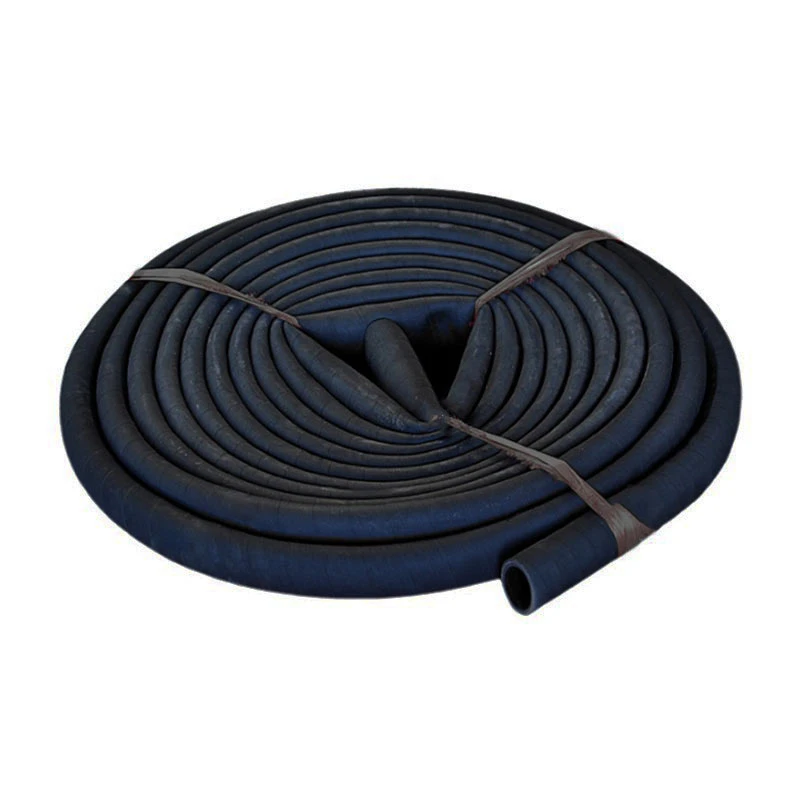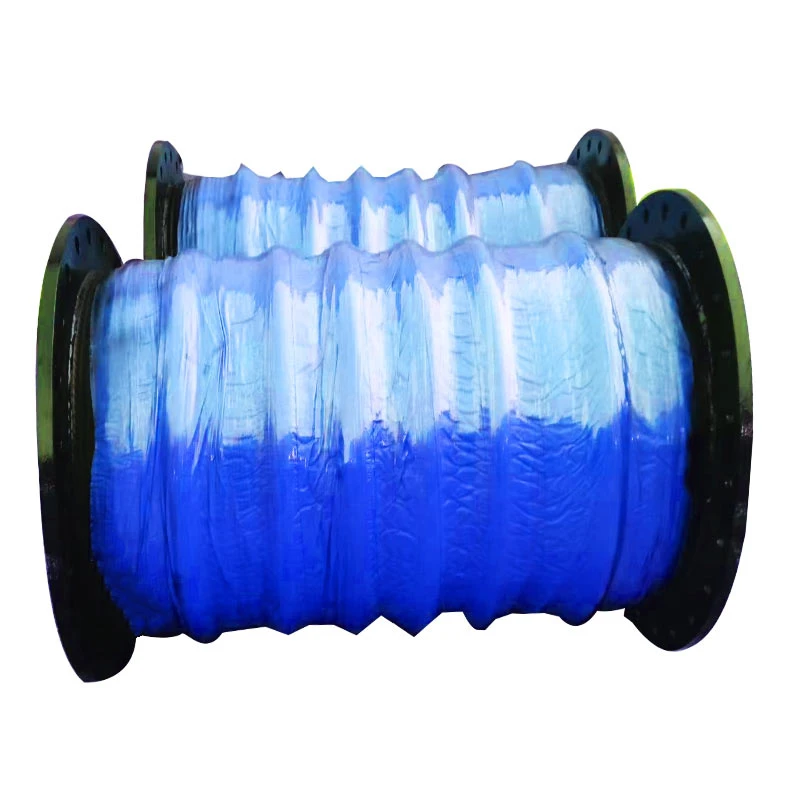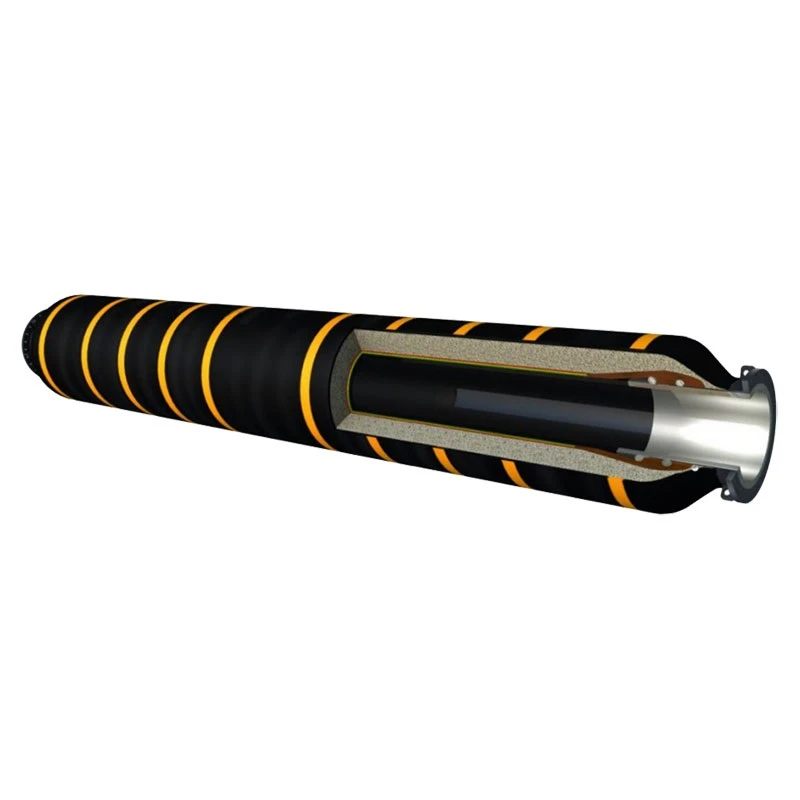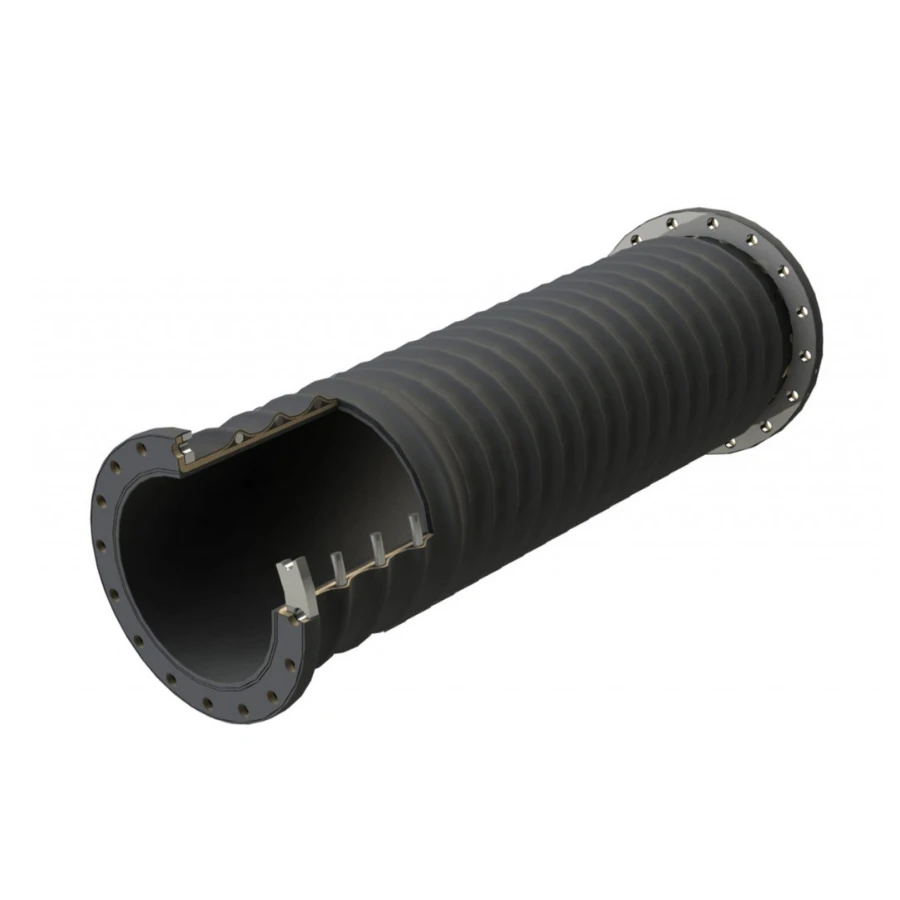Suction and Discharge Rubber Hose
Suction and discharge rubber hoses are versatile, heavy-duty hoses designed for efficient transfer of water, oil, chemicals, and other fluids in industrial, agricultural, and construction applications. Built with a robust construction, these hoses are engineered to withstand both suction and pressure forces, making them suitable for pumping, irrigation, and fluid transport systems.
The inner tube of the hose is made from high-quality synthetic rubber, providing excellent resistance to abrasion, chemicals, oils, and weathering. This ensures durability and longevity, even in harsh environments. The smooth inner lining also minimizes friction loss, promoting efficient fluid flow.
The hose body is reinforced with multiple layers of textile or wire braiding, delivering superior strength to resist collapse under suction pressure and maintain shape under discharge pressure. This reinforcement makes the hose flexible yet tough enough to handle heavy-duty tasks and rough handling.
The outer cover is made from abrasion-resistant rubber that protects against cuts, UV radiation, ozone, and environmental wear, allowing for reliable use outdoors and in demanding conditions. Additionally, suction and discharge rubber hoses are designed to operate effectively across a wide temperature range, typically from -40°C to +70°C (-40°F to 158°F).
Available in various diameters and lengths, these hoses can be fitted with standard couplings and connectors for easy integration with pumps and equipment. Commonly used in water suction, oil transfer, chemical discharge, and slurry pumping, these hoses provide a dependable solution for fluid handling needs.
In summary, suction and discharge rubber hoses combine strength, flexibility, and chemical resistance, making them ideal for a wide range of industrial and agricultural fluid transfer applications.
What Is the Difference Between Suction and Discharge Hose?
Suction and discharge hoses are both essential for fluid transfer but serve different functions and are designed to handle distinct pressures and stresses.
Suction Hose:
A suction hose is built to withstand negative pressure or vacuum conditions when fluids are drawn into pumps or other equipment. Because of this, suction hoses have reinforced walls—often with wire helixes or heavy-duty textile braiding—to prevent the hose from collapsing under suction forces. Their inner lining is smooth to allow fluid to flow easily and resist abrasion from materials being sucked in. Suction hoses are typically more rigid and thicker to maintain their shape during vacuum use.
Discharge Hose:
Discharge hoses, on the other hand, are designed to handle positive pressure when fluids are being pushed out from pumps or tanks. They are usually more flexible and lighter than suction hoses because they don’t need to resist collapsing. The walls of discharge hoses are reinforced to withstand internal pressure and prevent bursting. It does not require the same structure as suction hoses. Discharge hoses also have abrasion-resistant inner linings to endure fluid flow and minimize wear.
Key Differences:
Suction hoses resist collapsing under vacuum; discharge hoses resist bursting under pressure.
Suction hoses are reinforced with wire helixes or stronger braiding; discharge hoses have lighter reinforcement.
Suction hoses tend to be thicker and less flexible; discharge hoses are more flexible and lighter. However, it mainly depends on the pressure required by the customer.
Each hose is optimized for the direction and nature of fluid movement.
In summary, while both hoses transport fluids, suction hoses are built to handle vacuum without collapsing, and discharge hoses are designed to handle pressure without bursting.
What Is a Suction Hose?
A suction hose is a specially designed flexible hose used to transfer liquids, slurries, or gases by creating a vacuum or negative pressure at the pump end to draw the material in. Unlike standard hoses, suction hoses are engineered to resist collapsing or deformation when subjected to the vacuum forces generated during suction.
The construction of suction hoses typically includes a smooth inner lining made from materials such as rubber, PVC, or polyurethane to reduce friction and abrasion from the materials being drawn in. To prevent the hose from collapsing under vacuum, it is reinforced with heavy-duty textile braids or wire helixes embedded within the hose wall, providing strength and structural integrity.
Suction hoses are widely used in industries such as agriculture, construction, mining, and manufacturing for pumping water, slurry, fuel, chemicals, and other fluids. Their design allows them to maintain shape and performance even when used in harsh environments or over long distances.
These hoses also offer good resistance to abrasion, weathering, oils, and various chemicals, depending on the materials used in construction. They are often available in different diameters and lengths and can be fitted with a variety of couplings or connectors for easy integration with pumps and equipment.
In summary, suction hoses are essential for applications where fluids need to be efficiently drawn from one location to another without the hose collapsing, ensuring smooth and continuous flow during vacuum pumping operations.








